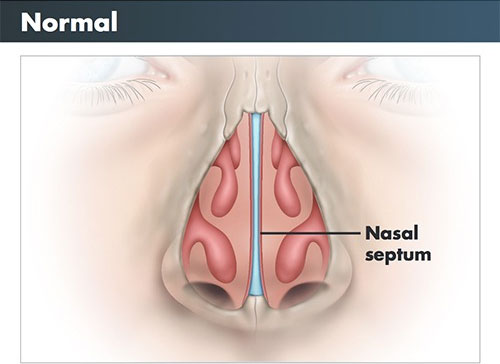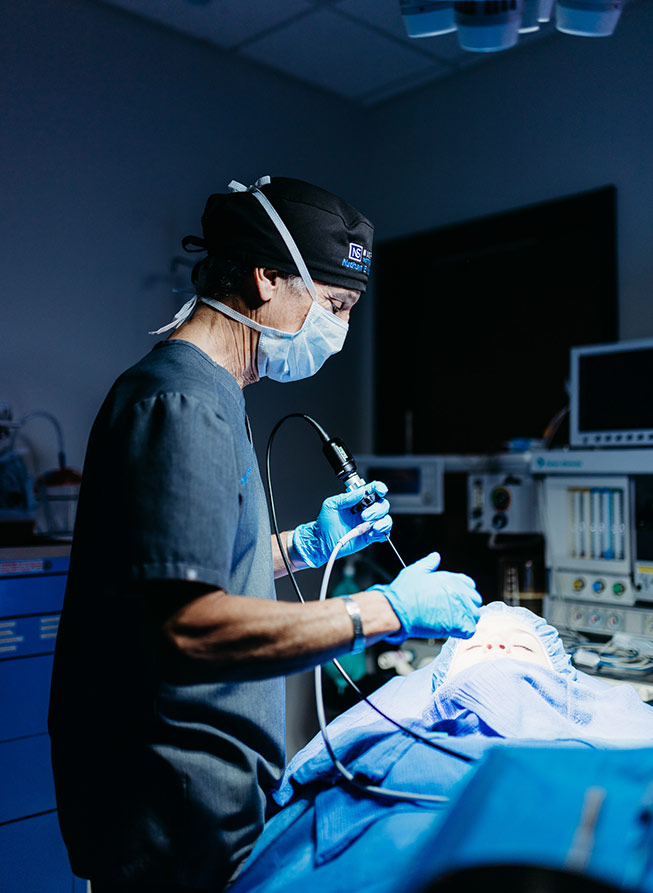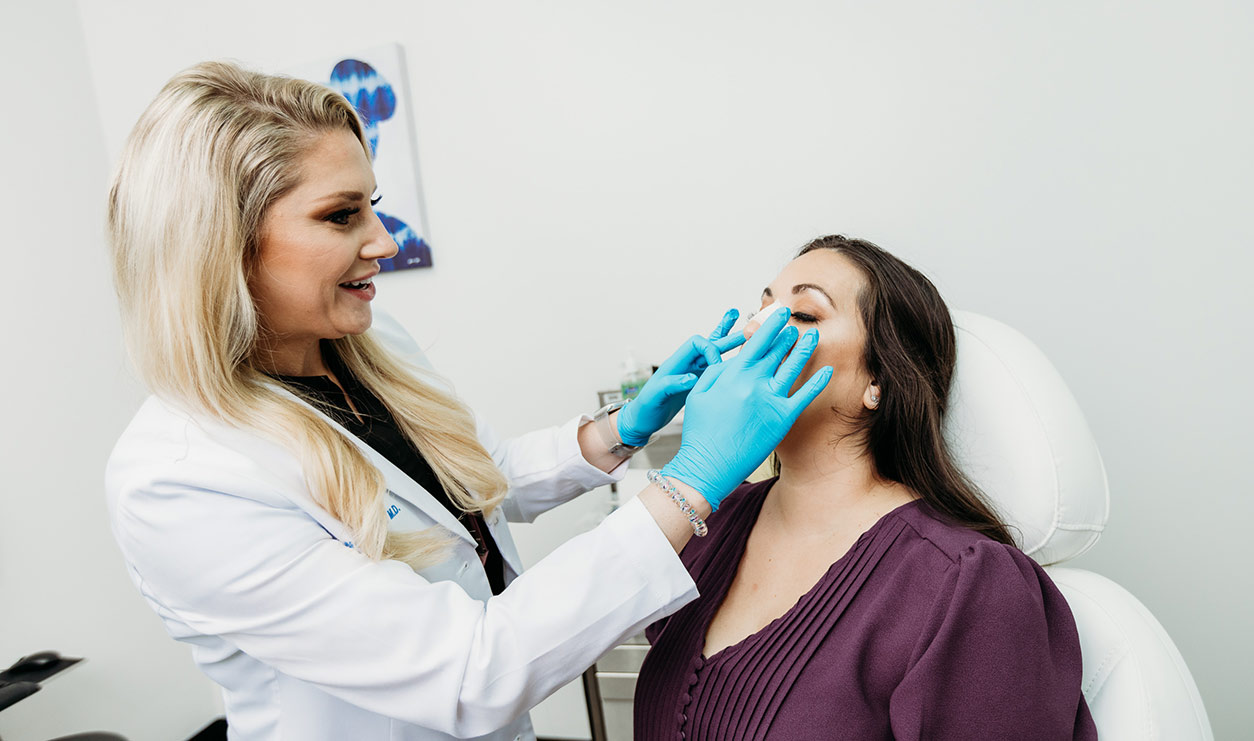

Balloon septoplasty is a non-invasive office procedure to correct the deviated septum. It involves placing a balloon in either nostril and placing it against the deviation of the septum. The balloon is inflated, deflated, and removed. This is repeated on the contralateral side and again as needed to get the septum into a midline position. Balloon septoplasty can be performed at the same time as other nasal surgeries, including balloon sinuplasty, removal of polyps, turbinate reduction, and rhinoplasty.
The wall that divides the left and right sides of the nasal cavity is called the septum. It is made of thin bone and cartilage and if “bent” or “deviated,” it can cause nasal obstruction and other sinus-related problems.
Balloon Septoplasty is an office procedure performed to straighten a deviated septum. A special balloon has been designed to extend non-invasive techniques to septal surgery. The procedure can be done under local anesthesia, although at the Nose and Sinus Institute of Boca Raton, all nose and sinus procedures are performed under a light anesthetic. When done in this manner, patients do not feel any discomfort.
No packing is required. The surgeon will usually leave thin splints to hold the corrected septum in place during healing. These splints are normally removed within one week of the procedure.

A deviated septum may cause one or more of the following symptoms:
Factors that determine if you qualify for a Balloon Septoplasty include:

One of the major benefits of Balloon Septoplasty is the short recovery time. Whether done alone or in combination with other procedures such as a Balloon Sinuplasty procedure, patients go home the same day and most are back to work and their daily activities the next day.
Expect some discomfort, fatigue, swelling, and pain. Your surgeon will provide you with detailed recovery care guidelines to ensure the best outcome. Do steer clear of any strenuous activities, and if medication is prescribed, then please follow through on this.
Balloon septoplasty can significantly improve the quality of life for those affected by blocked nasal passages as a result of a deviated nasal septum. Benefits include:
Choosing an experienced board-certified plastic surgeon who specializes in nose surgery will drastically minimize the associated risks and side effects of the balloon septoplasty procedure. These include:
NSIBR has been providing exceptional care to patients throughout Boca Raton since 1987! They are trusted with surgical excellence that continues to deliver desired results. Schedule your appointment today at (561-939-0900) to experience life-enhancing quality treatment and care.
Conveniently located in Boca Raton, our ENT doctors serve Boca Raton and all surrounding communities in Palm Beach and Broward Counties
Both traditional and balloon septoplasty are procedures designed to fix a deviated nasal septum. Traditional Septoplasty elevates the mucosa (lining) of the septum off of the underlying bone and cartilage. The deviated bone and cartilage are straightened with specially designed instruments. Balloon Septoplasty uses an airway balloon to gently reposition the deviated septum. The airway balloon is passed through the nostril and positioned over the area of deviation. It is inflated in each side of the nose, deflated, and removed.
Septoplasty procedures are done on the inside of the nose to restore breathing. The deformity rarely extends to the bridge of the nose in which case a more extensive procedure might be necessary. Sometimes a Rhinoplasty procedure may be necessary to straighten the outside of the nose as well. As a rule, straightening the septum does not affect the appearance of the nose.
Four areas of the nose are thoroughly examined for nasal obstruction: the nasal valves, the septum, the turbinates, and the sinuses. Nasal obstruction is usually multifactorial with each problem effectively addressed during one appointment in a painless, minimally invasive fashion. Other nose and sinus procedures commonly performed during the same session as the Balloon Septoplasty to provide comprehensive relief include:
Take charge of your life today! Call us or submit an online form, and you will be speaking with one of our talented surgeons in no time.
(561) 939-7352